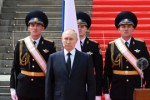The Imperfect Dichotomy
By Prerna Bhat
“Beyi yi wathwo, bey yi saet, asih kyah chhu door karaan?”
(Translation: Let us sit together again, let us walk together – what is it that keeps us apart?)
For decades, the bond between Kashmiri Pandits and Kashmiri Muslims was one of deep cultural and social interweaving, marked by shared traditions, language, and values. This brotherhood, however, has faced continuous strain due to government policies that have historically manipulated the region’s demographics, politics, and communal harmony for strategic gains. What began as administrative decisions gradually turned into policies that not only deepened the rift but also ensured that mistrust remained embedded in the psyche of both communities. Today, this divide is not just a relic of the past but an ongoing strategy, executed in ways that remain largely unnoticed by the rest of the world.
The most significant rupture occurred in 1990 when the targeted killings and threats forced thousands of Kashmiri Pandits to flee the Valley. This exodus was a tragedy, but what is often left unspoken is how the establishment responded to it – not by bridging the divisions but by exploiting them. The displacement of an entire community should have been a moment for reconciliation, yet no serious attempt was made to ensure that Pandits could return safely. Instead, they were resettled in isolated camps, kept away from their homeland, with little effort to reintegrate them into Kashmiri society. Their suffering became a tool, used repeatedly in political discourse while no real measures were taken to heal the wounds of separation.
For Kashmiri Muslims, the 1990s were marked by a........






















 Toi Staff
Toi Staff Tarik Cyril Amar
Tarik Cyril Amar Belen Fernandez
Belen Fernandez Maryam Aldossari
Maryam Aldossari Kersten Knipp
Kersten Knipp Patrick Gathara
Patrick Gathara Rachel Marsden
Rachel Marsden Sabine Kinkartz
Sabine Kinkartz Warren J. Blumenfeld
Warren J. Blumenfeld Gideon Levy
Gideon Levy Leonid Ragozin
Leonid Ragozin
